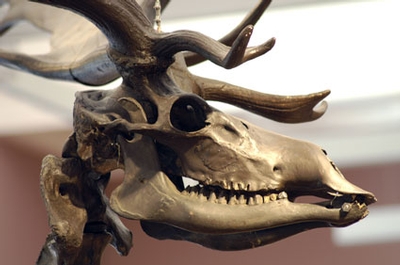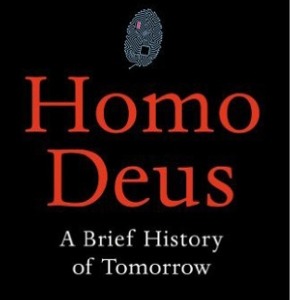 It is a staggering fact that around 99 per cent of all the species that have ever lived on Earth have become extinct. There has always been, and presumably always will be, so long as there are living things, a background rate of extinction. Alarmingly however, this background rate is speeding up and unsurprisingly, it is possible to detect a human hand in many of the extinction events. But, if extinction is just a fact of life (and death) then why should we find it so troubling? From an ethical point of view, having blood on "our" hands is no doubt a major source of this anxiety. Recognising the fact of extinction alongside recognition of our destructive behavior also gives rise to the niggling fear that, just as with other species, extinction might happen to us.
It is a staggering fact that around 99 per cent of all the species that have ever lived on Earth have become extinct. There has always been, and presumably always will be, so long as there are living things, a background rate of extinction. Alarmingly however, this background rate is speeding up and unsurprisingly, it is possible to detect a human hand in many of the extinction events. But, if extinction is just a fact of life (and death) then why should we find it so troubling? From an ethical point of view, having blood on "our" hands is no doubt a major source of this anxiety. Recognising the fact of extinction alongside recognition of our destructive behavior also gives rise to the niggling fear that, just as with other species, extinction might happen to us.
Despite the efforts of conservationists current estimates of extinction rates suggest that something between 5 and 50 species are becoming extinct every day. Partly because of this, many scientists believe that the current period in geological history may amount to a sixth mass extinction, following the previous five that have been detected over the course of the rise of the Earth sciences. The first of the "big five" occurred at the end of the Ordovician around 443 Ma ago (Ma, million years) and claimed many of the trilobites. The second at the end of the Devonian around 354 Ma ago, claimed many marine families. The third and most severe came at the end of the Permian around 248 Ma ago, claiming something like 95 per cent of marine animals, including the last of the trilobites and eurypterids (water scorpions). The fourth mass extinction occurred in the late Triassic around 206 Ma ago and claimed many of the insect families on land and most of the mammal-like reptiles and large amphibians characteristic of that period. Number five and the most famous of all the mass extinctions occurred towards the end of the Cretaceous around 65 Ma ago. Amongst its victims on land were the dinosaurs, in the air, the pterosaurs, and in the sea the plesiosaurs, mosasaurs and ammonites.
The evidence for these extinction events can be seen in any of the vast number of natural history collections in museums around the world. What will differentiate "number six" from the previous five will be the role of a single species in the demise of so many others. Human beings may be destroying the planet; but at the same time, through scientific research and museum collections, they might be producing the tools to understand and possibly prevent such destruction in future.
Extinction was only established as a concept in the 19th century thanks to the hard work of scientists and fossil hunters. Both museum collections and scientific research were crucial in disseminating the idea of extinction to the public. Such collections in museums around the world are the public face of the natural sciences and their role in disseminating "hard science" to the public, especially when you consider the current debate over Intelligent Design, creationism and atheism, is still as vital today as it was in the 19th century.
My own place of work, Glasgow Museums, has a collection of between 40,000-50,000 fossils that includes examples from most of the major plant and animal groups. We have ammonites, trilobites and eurypterids that met their ends in the Cretaceous and Permian periods respectively; we have an excellent collection of Carboniferous (359 to 299 Ma ago) fossils, including an example of the amphibian Balanerpeton; some specimens of the Triassic reptile Stagonolepis and a Jurassic ichthyosaur Stenopterygius. We also have a rich collection of Quaternary (around 12,000 years old) fossils including those of reindeer, mammoth, woolly rhinoceros and giant Irish Deer. We have examples in the collection of recent well-known extinctions - the great auk (1844), huia (1907), and the passenger pigeon (1914), and many extinct molluscs and insects that are less well-known. Our collections are continuously being used in scientific research. Particularly, work relating to Local and UK Biodiversity Action Plans and local Floras (plant species of a particular area) conducted by Keith Watson, Richard Sutcliffe and others are providing clues to local extinction events. They are also actively trying to prevent other extinctions occurring.
Whether or not it will be demonstrated in the future that we are now in the midst of a Sixth mass extinction is a moot point. What is undoubtedly the case is that "our problem" with extinction arises out of a recognition of our role in the current tide of extinction events. In many cases we have blood on our hands. Our feelings of guilt in the face of impending extinction may provoke us to address the deep question about exactly what "our" relationship with the world is, and what it should be: master, conserver, researcher, preserver, or just one species among many? In any case, the warning from natural history is that it can take anything up to 10 million years for life on earth to recover from mass extinctions.

